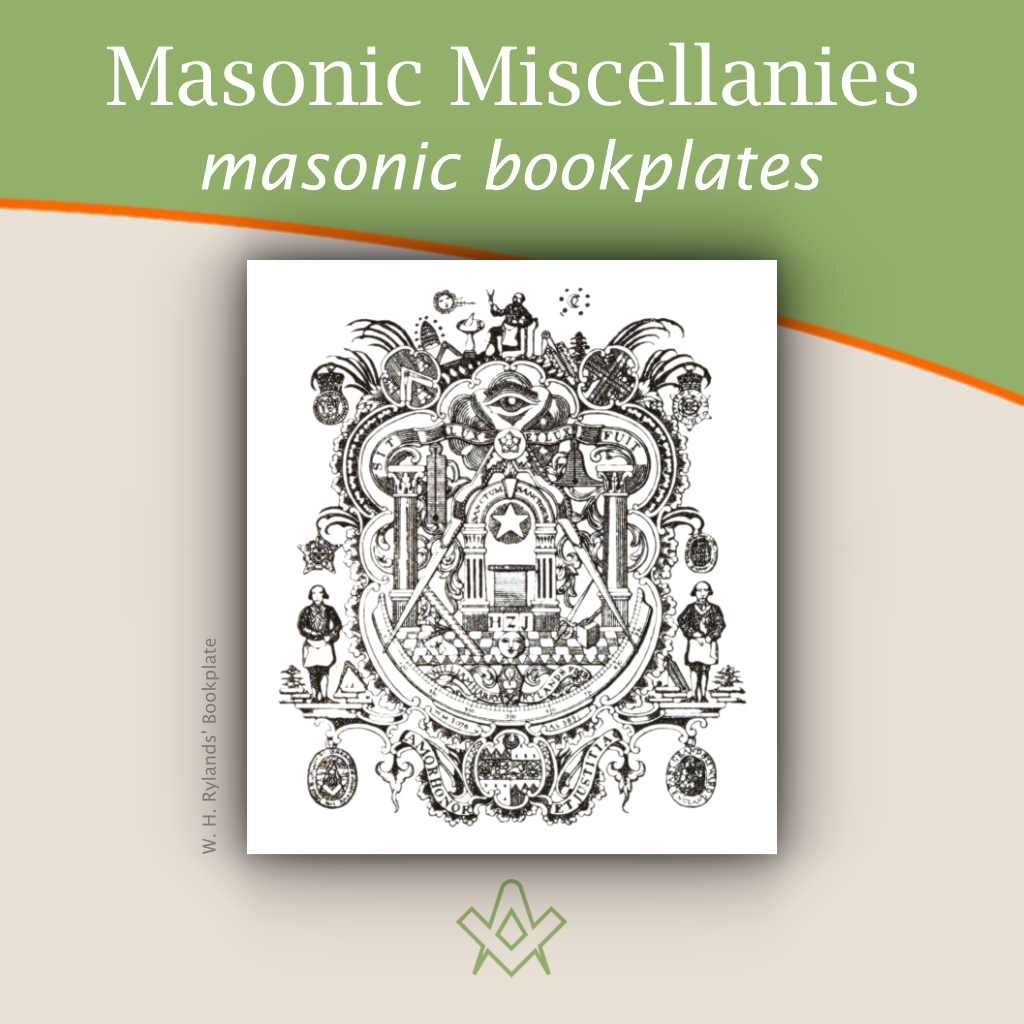As is often the case when putting together The Square, I find all manner of interesting tit-bits when researching some other entirely different sub-section of Masonic history.
This month I stumbled over an intriguing little book on the subject of ‘Masonic Bookplates’. Not something that I expected to find but evidently was of great interest to those early collectors of bookplates, Masonic or otherwise.
So, why use a bookplate? And what is Ex Libris?
A bookplate (or book-plate, as it was commonly styled until the early 20th century), also known as ex-librīs (Latin for ‘”from the books (or library)”‘), is a printed or decorative label pasted into a book, often on the front endpaper, to indicate ownership.
Simple typographical bookplates are termed “book labels”.
Bookplates bear a motif relating to the book’s owner, such as a coat-of-arms, crest, badge, motto, or a design commissioned from an artist or designer. The name of the owner usually follows an inscription such as “from the books of…” or “from the library of…”, or in Latin, “ex libris”. Bookplates are important evidence for the provenance of books.
In the United States, bookplates replaced book rhymes (which replaced book curses) after the 19th century.
– Source: Wikipedia
Did you know? The earliest known book marker\label was that of Amenhotep III and Queen Tiye c. 1391−1353 BCE…
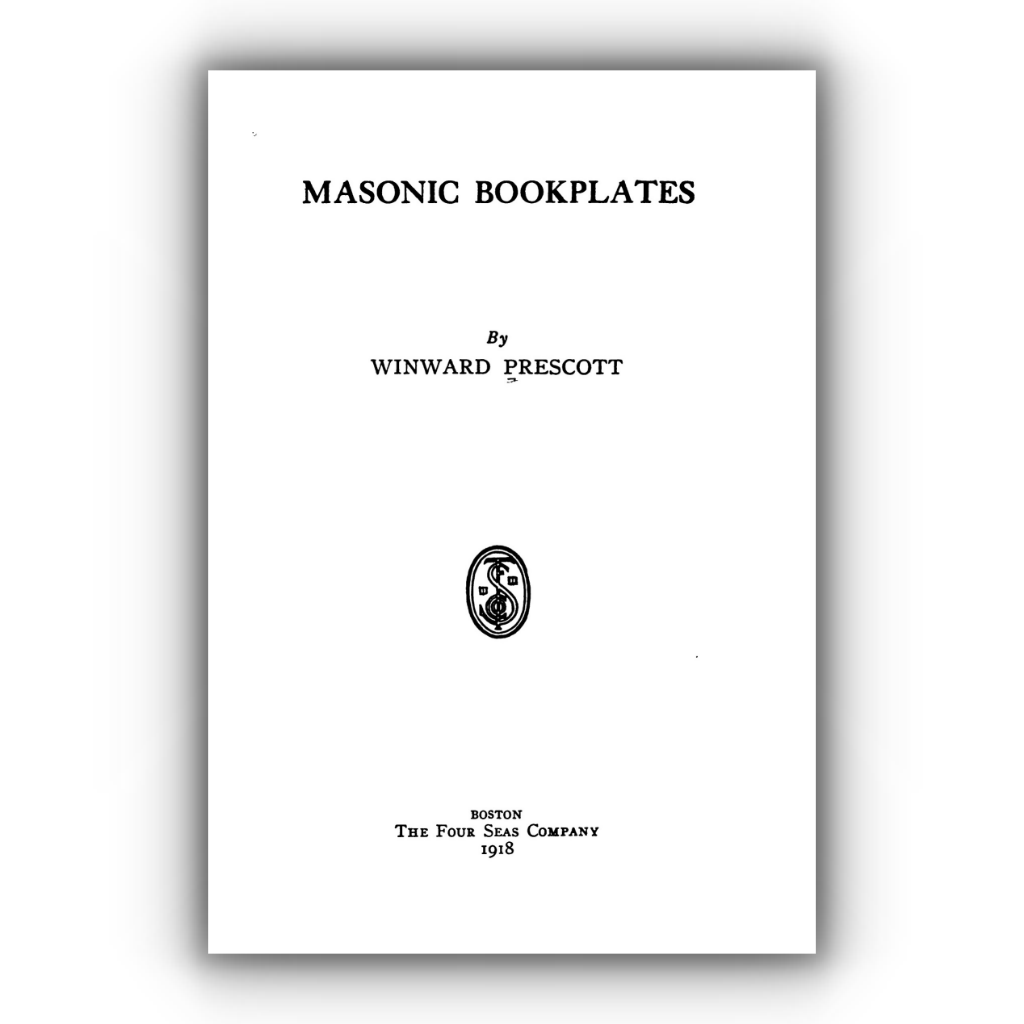
The book is entitled (unsurprisingly) Masonic Bookplates, compiled by Winward Prescott in 1918, and published by The Four Seas Company, Boston.
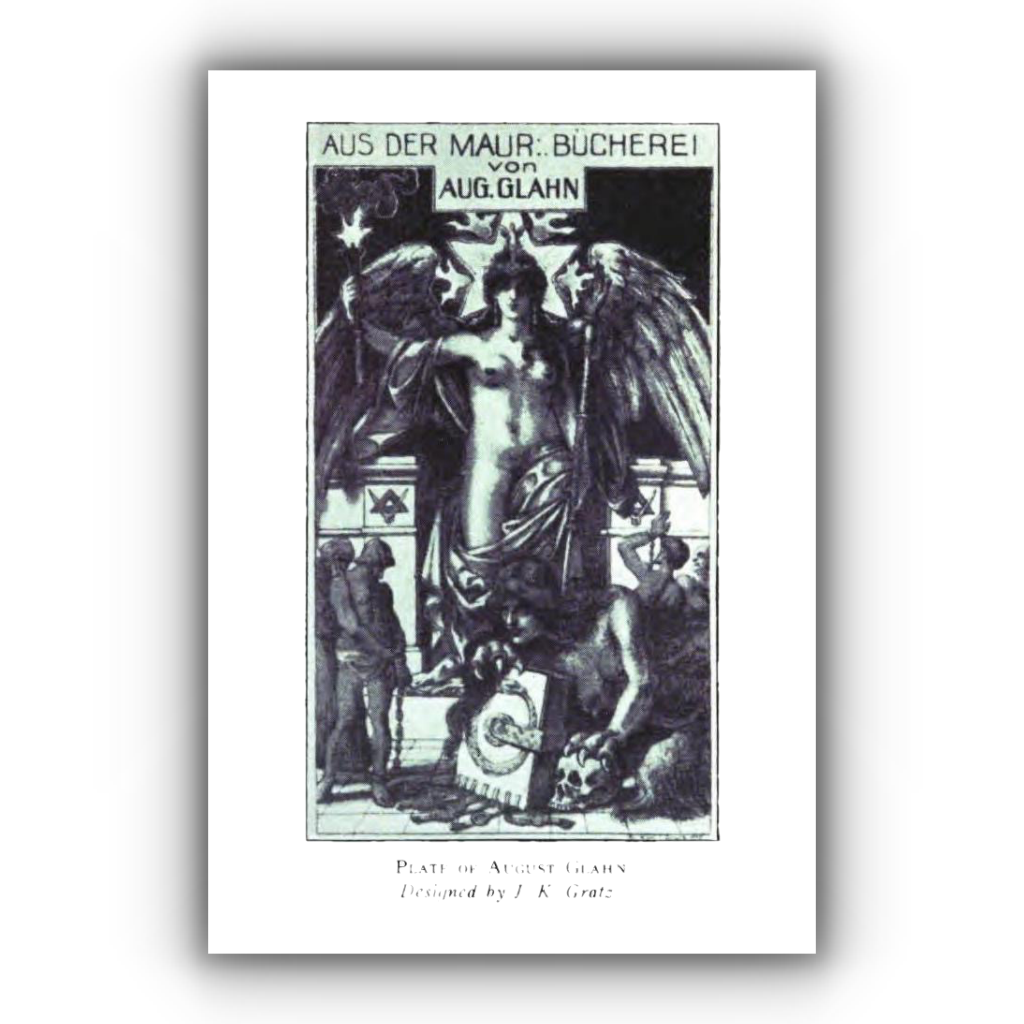
The Frontispiece: Plate of August Glan.
Prescott begins his 28 page booklet by mentioning two other books on the subject:
‘Masonic Book-Plates are of course primarily interesting to members of the Craft who can understand the various signs and symbols appearing upon them.
Yet these plates are interesting to Book-Plate collectors in being among the rarest of Ex Libris specialties.
Two collectors have written on the subject — Robert Day in his “Masonic Book-Plates”, (London, 1904), and A. W. Pope with “Remarks on some Masonic Book-Plates in America and their Owners”, (Boston, Part I, 1908; Part II, 191 1 ).
Yet combining the lists of plates in these two brochures and adding to them the plates in my own collection I can here list but a few over one hundred and seventy Masonic Ex Libris.’
Prescott begins with a brief explanation to the profane:
Before taking up the different emblems found on Masonic Book-Plates it might be well to explain that the initiate rises through the various stages of Freemasonry by a series of steps called degrees which the member may take in sequence as his interest leads him to enter into the work of the Craft.
The highest degree is the 33d which is conferred as an honor upon prominent Masons.
Together with and accompanying these steps or degrees, which may be called the main road of Masonry, are various side paths or divisional bodies such as the Shrine, the Knights Templar and others.
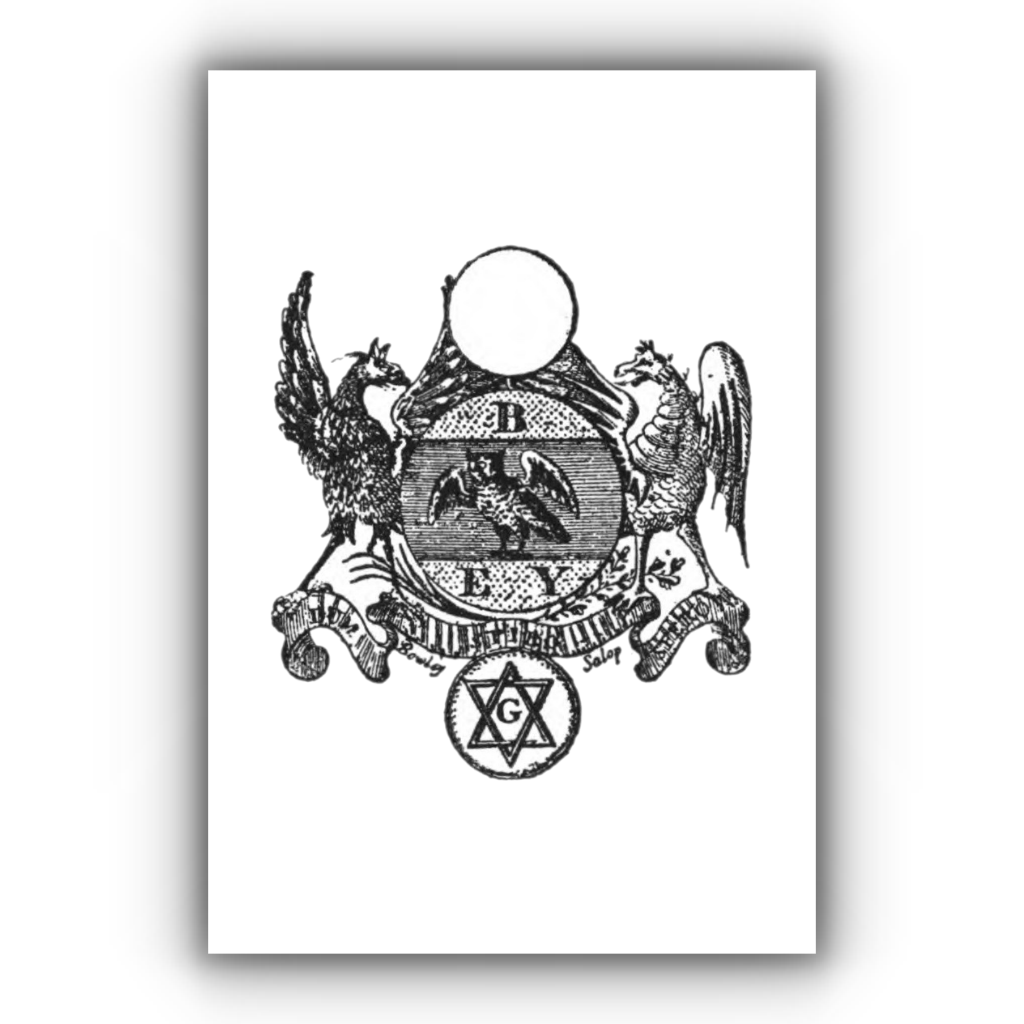
There are in some cases special symbols to denote these bodies; other emblems are used for Masonry in general.
To begin with — the most common mark is the general Masonic symbol of the square and compasses between which there is often placed a G.
Then there is the key-stone bearing a lettered circle, and the all-seeing eye sometimes placed in a triangle.
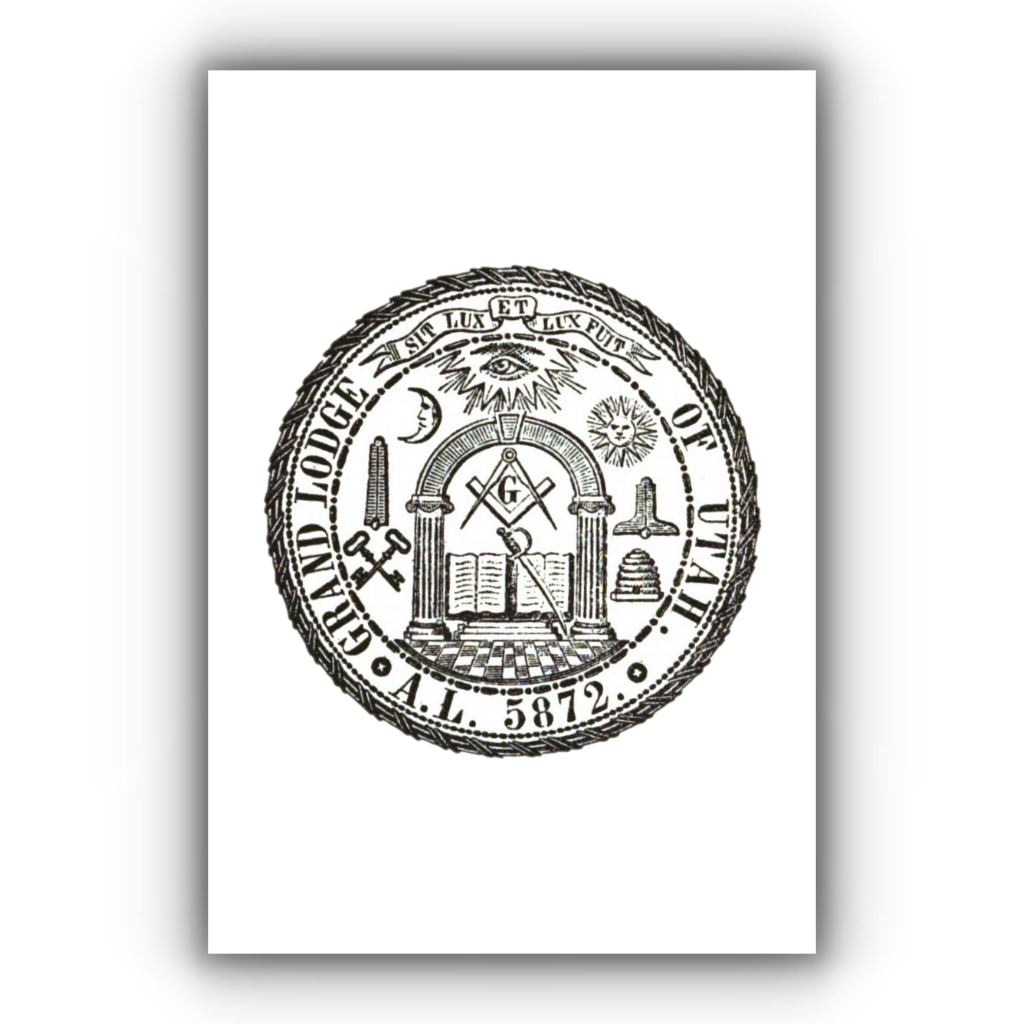
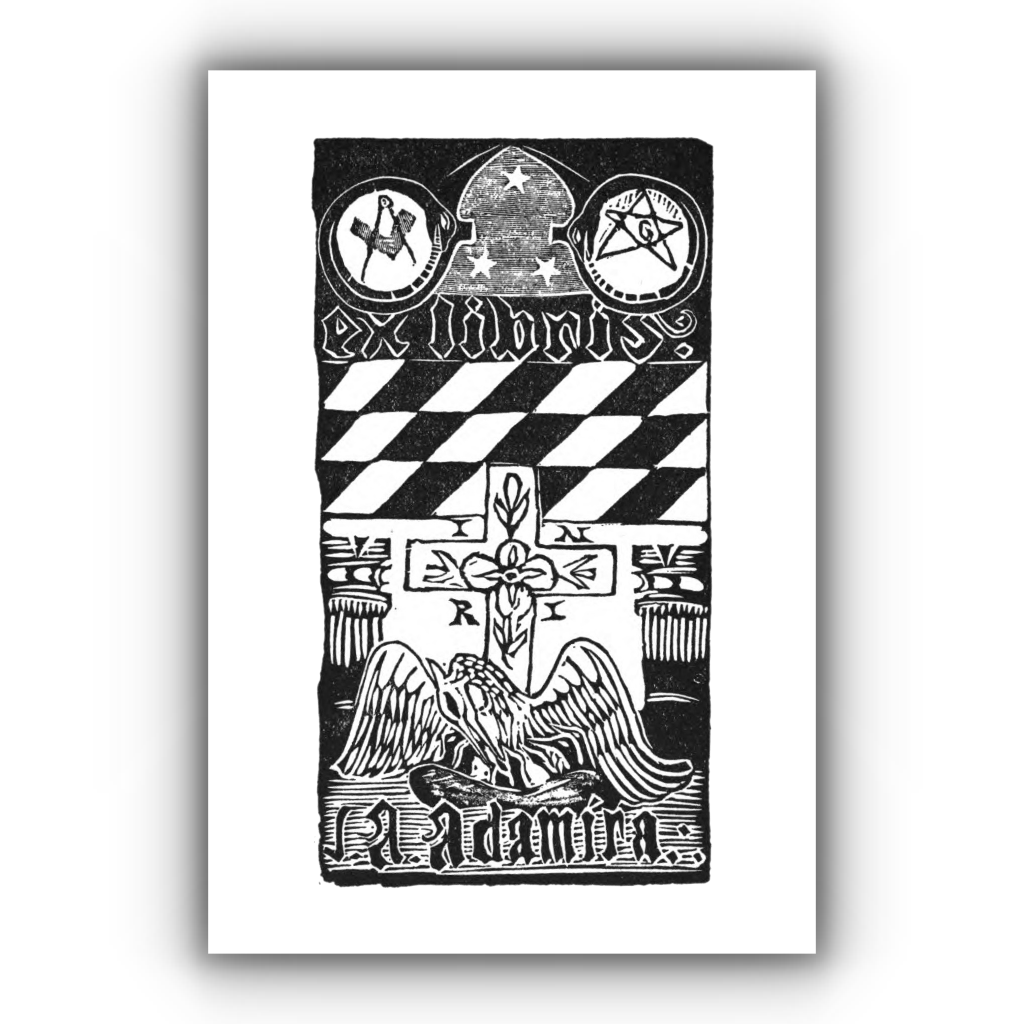
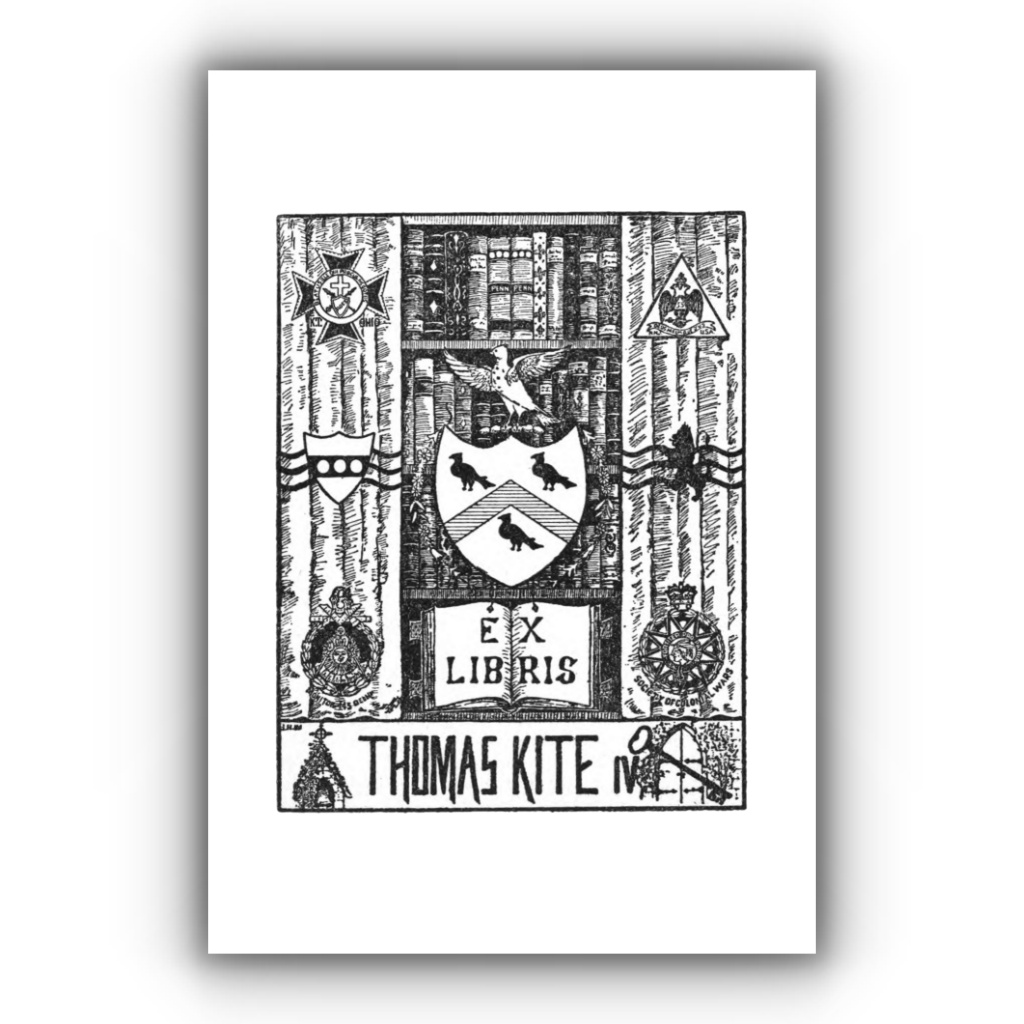
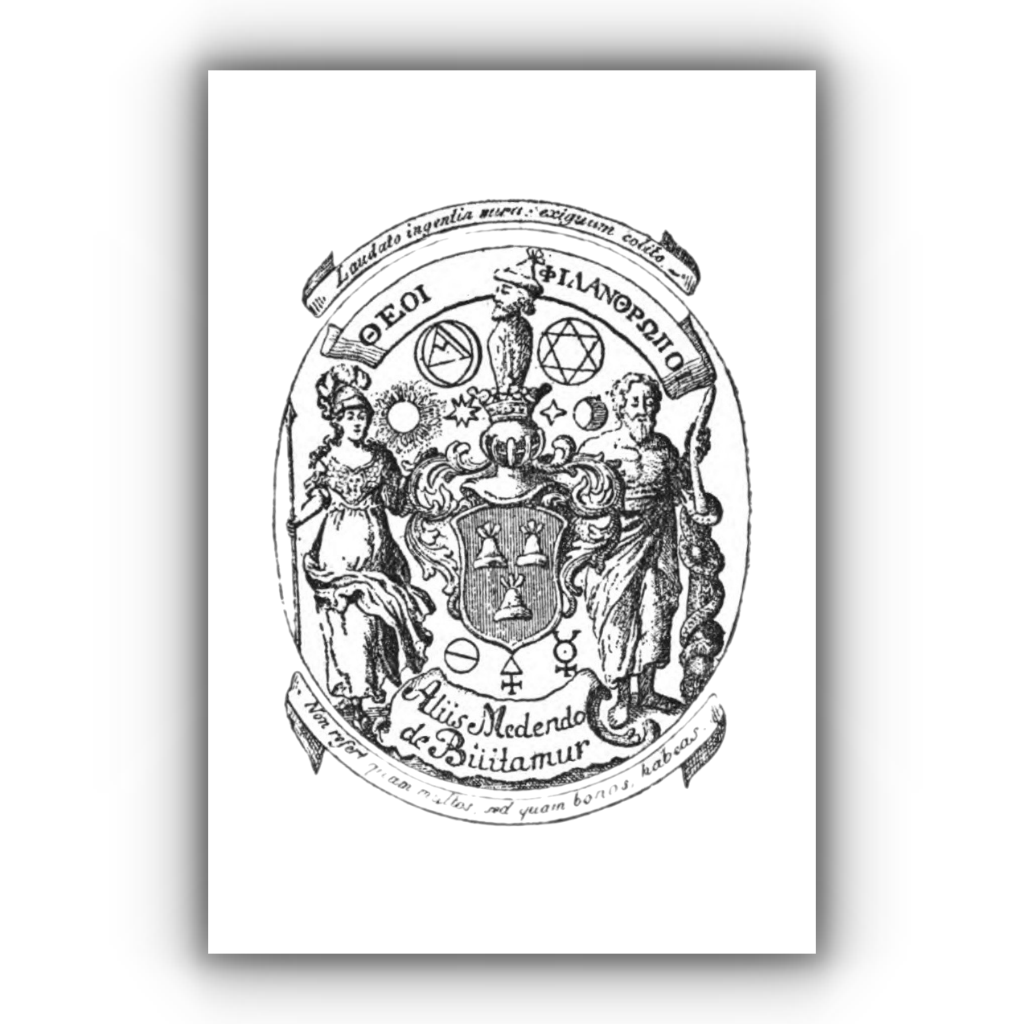
Various geometric figures are used, for instance the triangle, the circle, the cube or perfect ashlar, the five-pointed star or pentalpha, (See P-I, plate of L. M. Taylor) and the six pointed star formed of two triangles as in the Ruddiman plate.
At times a plate will have some of the architectural marks of a lodge room, such as the altar or the two columns with their spheres one for the earth and the other for the heavens.
A very interesting example of an altar with the beam of light falling on it from above is seen in the old plate of W. Chapman.
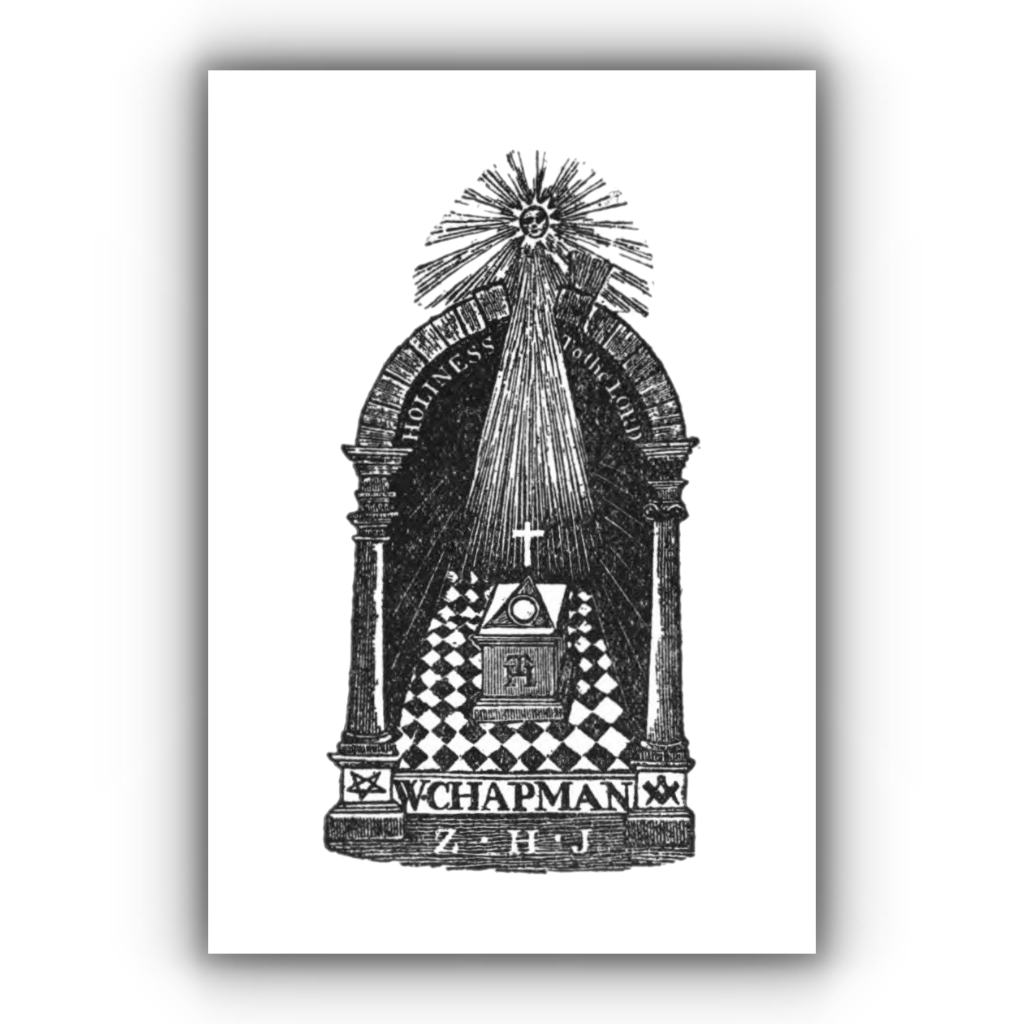
Bookplate of W. Chapman
Among the special emblems for the subsidiary Masonic bodies are the cross and crown (See plate of Dr. Egbert) ; the scimitar, crescent and star, the mark of the Shrine; the Maltese cross of the Knights Templar; and the crowned double eagle of the Scottish Rite bodies.
It is for these emblems that the Book-Plate collector must look.
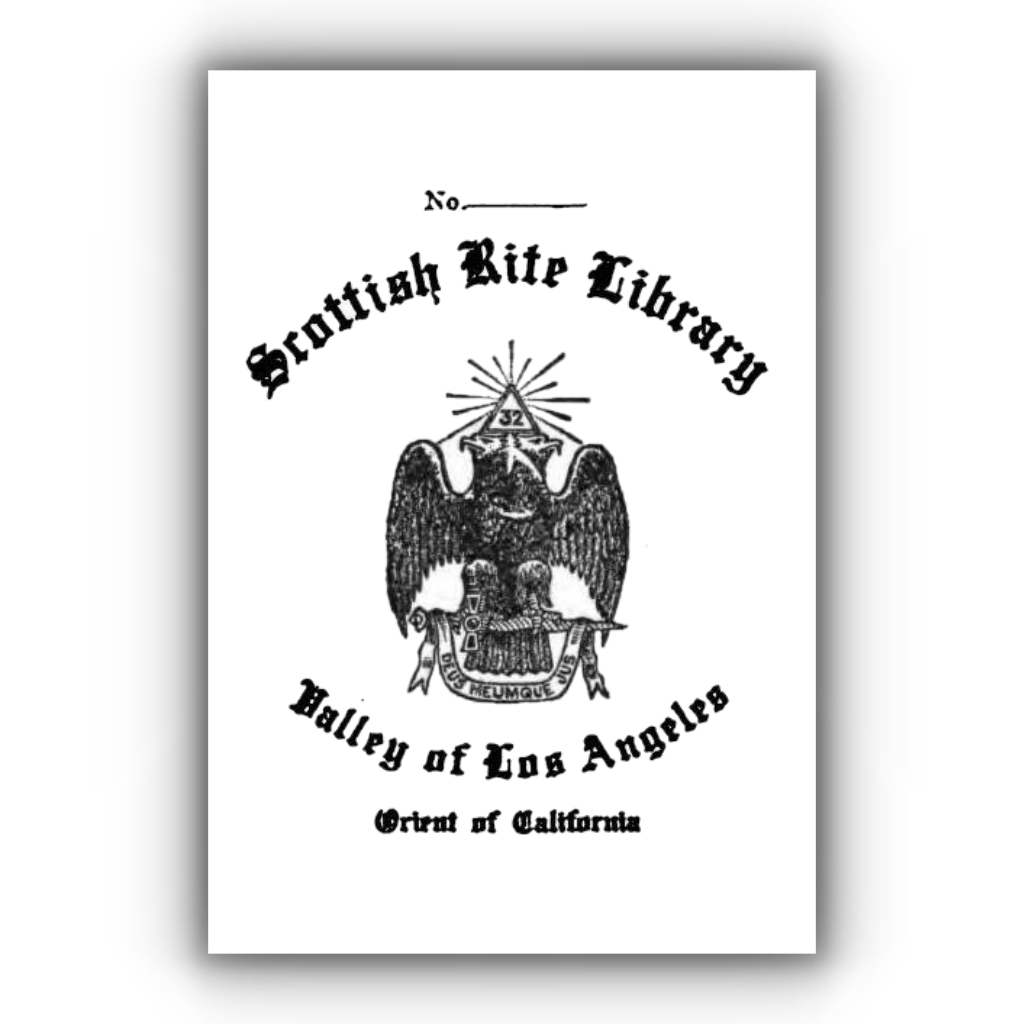
Some plates will be found to be almost entirely Masonic. That of W. H. Rylands has all sorts of emblems and symbols — the layman might almost get a liberal education in such matters by a study of this plate.
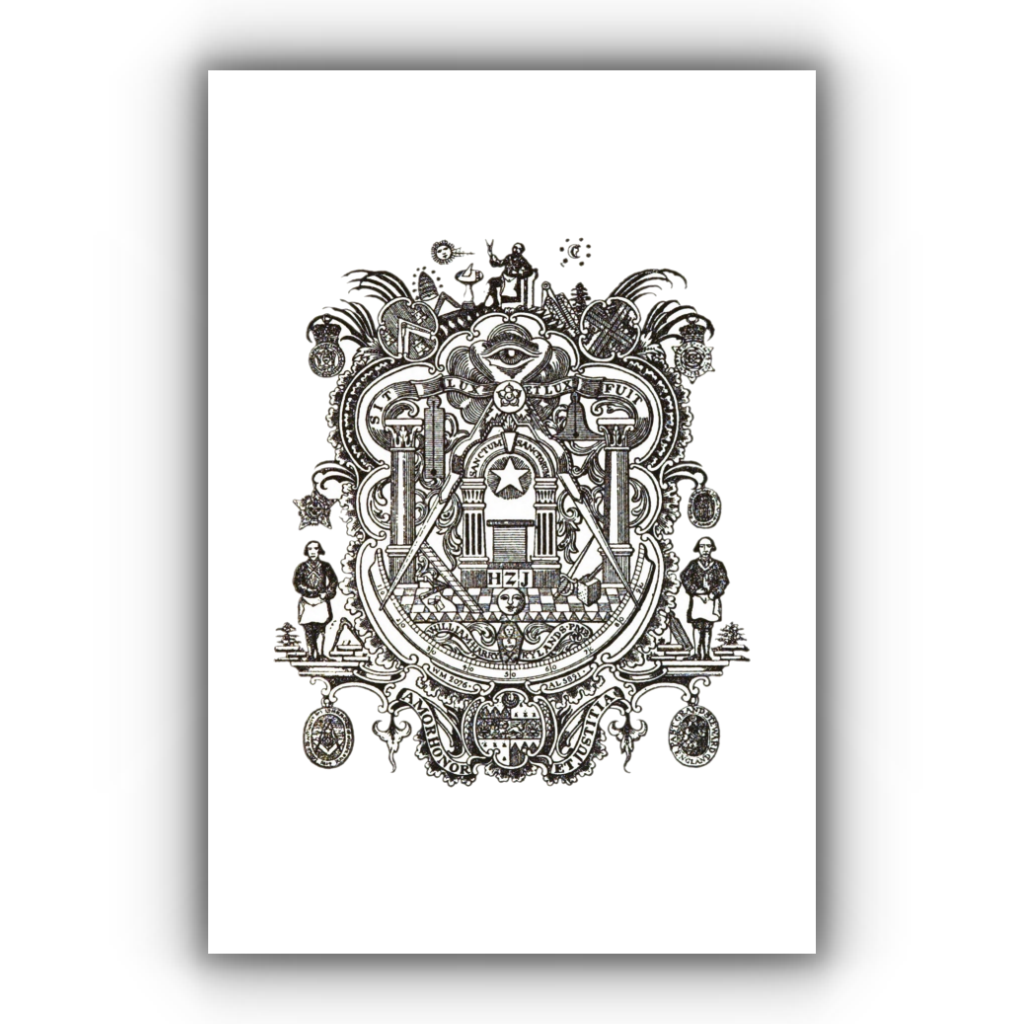
W. H. Rylands’ Bookplate
Another of the same kind is that of the Supreme Council 33d by W. P. Barrett. This is perhaps the most elaborate Masonic Book-Plate in existence and seems to contain all the insignia of the Scottish Rite.
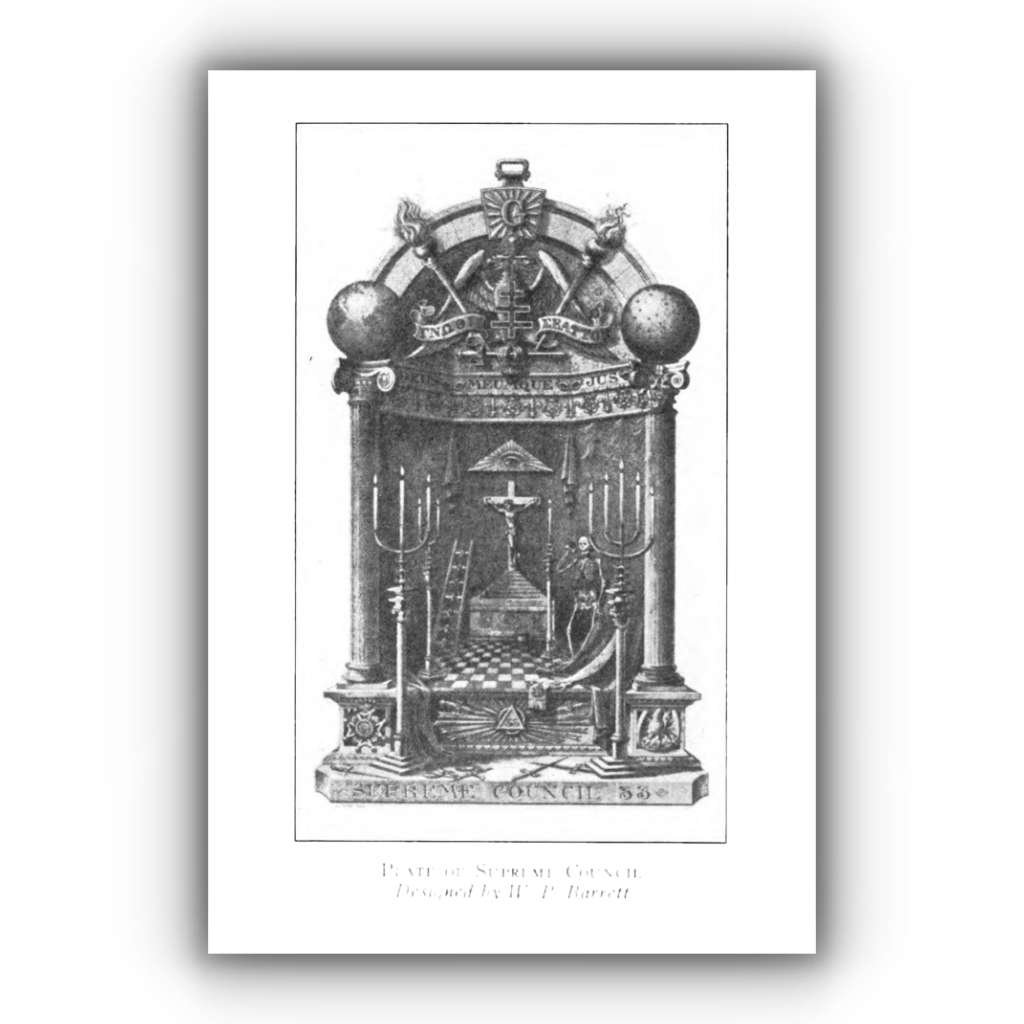
Paul Revere was an earnest Mason. He was initiated in the Lodge of St. Andrew in 1760, and held various offices.
“When the schism in St. Andrews arose, and the Lodge was nearly equally divided on the question whether it should renounce its allegiance to the Grand Lodge of Scotland, and hold under the Massachusetts Grand Lodge, his patriotic feelings made him the leader of the seceders from St. Andrews who united in forming the Rising States Lodge, taking its charter from the Massachusetts body.
Of this new lodge he was Master 1784 and 1791, and Treasurer 1785.
He was also junior Warden of the Royal Arch Lodge, out of which grew St. Andrews Royal Arch Chapter.”
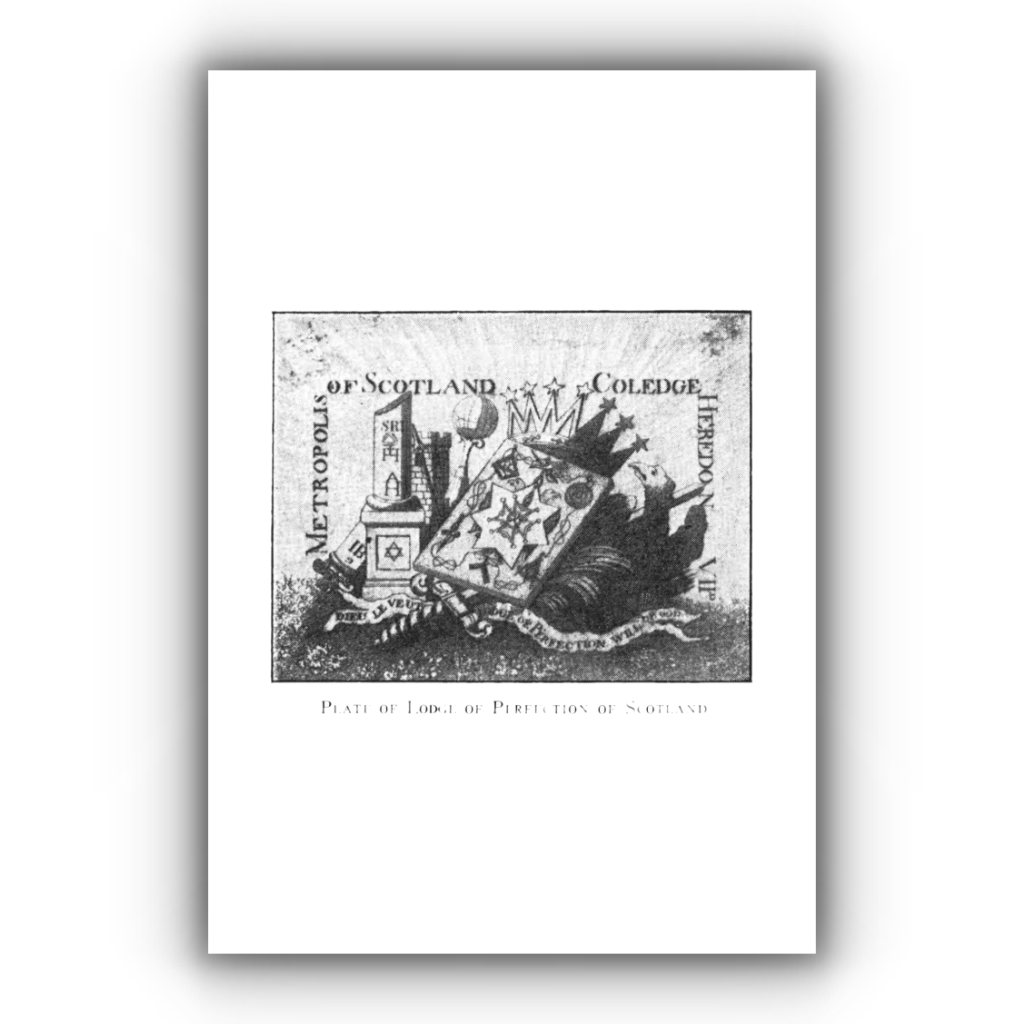
Some light in regard to the feeling at times held towards Freemasonry may be seen in the career of Silas Ketchum.
Born in Barre Vt., in 1835, he married in 1860 and worked his way through the Bangor Theological Seminary by means of his trade of shoemaker at which he had been apprenticed before his marriage.
After graduating he became pastor of a church in Wardsboro, Vt., where he remained for two years. In the library of the Grand Lodge of New Hampshire is a farewell sermon delivered at Wardsboro on Sept. 24, 1865. on Sept. 24, 1865.
On the inside of the cover of this Mr. Ketchum wrote :
— “In Sept. 1865 I was raised to the sublime degree of a Master Mason, in Mt. Lebanon Lodge, Jamaica, Vermont. For this crime I was dismissed from the church in Wardsboro, of which I had been pastor two years, and took my leave with the following sermon. Silas Ketchum.”
Mr. Ketchum later helped to edit two Vermont newspapers and the next year was called to a church in Bristol, N. H. During the later years of his life he was much interested in early New England matters and was a member of many historical societies, among them the New Hampshire Historical Society, the New Hampshire Antiquarian Society, the American Antiquarian Society, the Prince Society, the New York Historical Society, and the New England Historic Genealogical Society.
His Book-Plate shows four symbols of his life’s interests — the square and compasses for Freemasonry, the awl for his early trade, the bible for his ministry, and the pen for his antiquarian work.
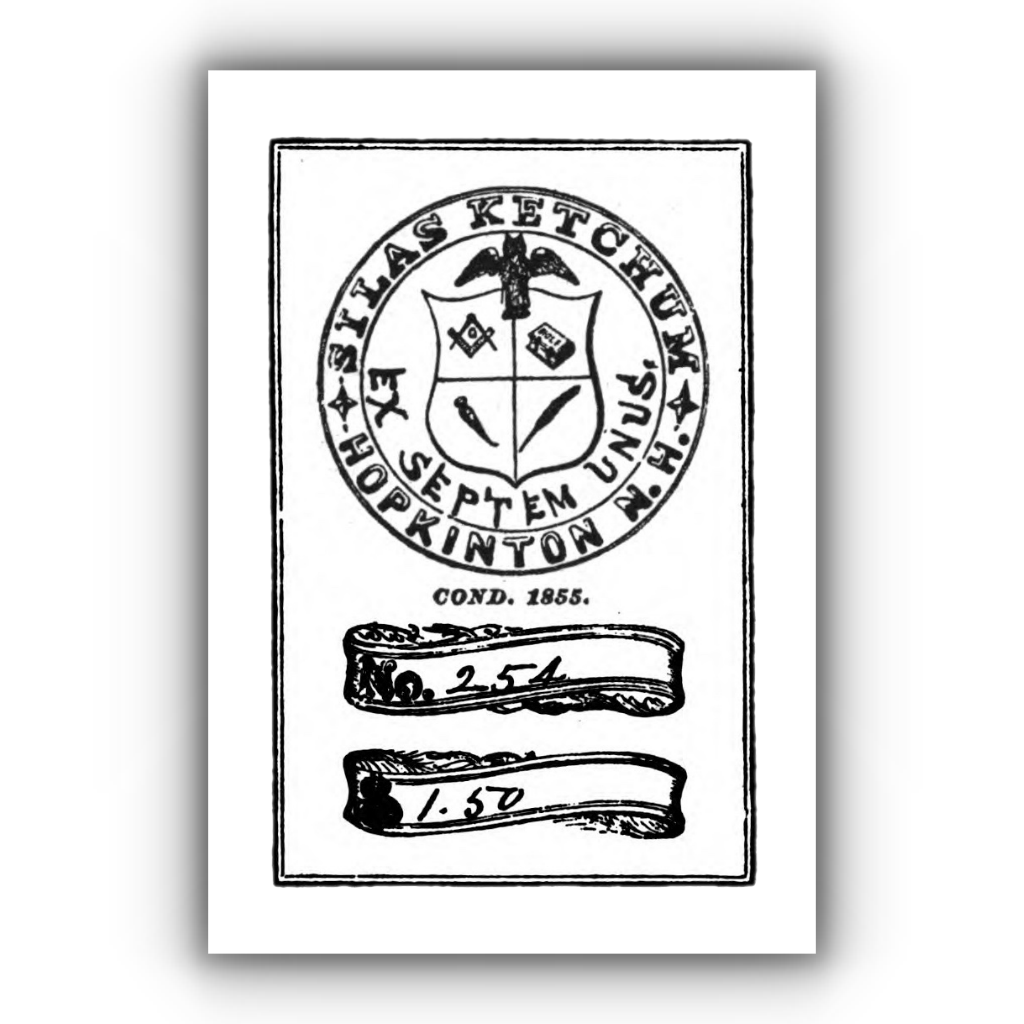
Silas Ketchum’s bookplate
Winward Prescott then includes a very long list of Masonic bookplates that he has discovered, and concludes that:
It is hoped that these few notes and comments may start some Book Plate collectors into trying to gather a few Masonic Ex Libris for a special collection.
The list which follows is of course not at all complete, and I hope that any collectors who may happen to find Masonic plates which are not here listed will be kind enough to bring them to my attention.
Text and image source: Masonic Bookplates, Winward Prescott, The Four Seas Company, Boston, 1918.
Article by: Philippa Lee. Editor

Philippa Lee (writes as Philippa Faulks) is the author of eight books, an editor and researcher.
Philippa was initiated into the Honourable Fraternity of Ancient Freemasons (HFAF) in 2014.
Her specialism is ancient Egypt, Freemasonry, comparative religions and social history. She has several books in progress on the subject of ancient and modern Egypt. Selection of Books Online at Amazon
Recent Articles: Masonic Miscellanies
 Masonic Miscellanies - The Amulet of the Ladder Explore the cosmic significance of the Ladder in ancient Egyptian mythology through Wallis Budge's "Egyptian Magic." Discover how this profound symbol bridges the mortal and divine, encapsulating the Egyptians' fervent afterlife aspirations with a blend of myth, magic, and material culture. Dive into the celestial ascent of Osiris and mortal souls. |
 Masonic Miscellanies - Adulterine Gilds Guilds, the associations that shaped medieval European society, were more than just organizations of artisans and merchants. They played a vital role in the economic and social development of towns and cities. This exploration delves into the intriguing concept of adulterine gilds and their interconnectedness with guilds, offering insight into the significance of legal authorization and recognition in medieval Europe. |
 Masonic Miscellanies - Masonic Orb Discover the fascinating world of Masonic ball watch fobs, intricately crafted with tiny pyramids that form a cross when opened. These decorative accessories were all the rage in the late 1800s and early 1900s, and they still hold a certain allure today. Explore the different varieties and symbols found on these unique pieces that carry deep Masonic meaning. |
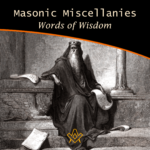 Masonic Miscellanies – Words of Wisdom Uncover timeless wisdom from King Solomon to Albert Pike in our latest Masonic Miscellanies, a treasure trove of insights for Masons. Journey through the ages and glean inspiring sayings, reflecting on their profound influence on Masonic principles. An enriching read for the enlightened. |
 Masonic Miscellanies - Symbolism of the Right Hand Unlock the enigmatic realm of Freemasonry as we delve into its age-old symbols, rituals, and philosophies. This thought-provoking exploration, drawn from Mackey's Revised Encyclopedia of Freemasonry, focuses on the iconic 'right hand' symbol - its rich history, universality, and profound significance. |
 Masonic Miscellanies - Order of the Secret Monitor Unveil the mystery of Freemasonry with 'The Order of the Secret Monitor'. Discover this lesser-known appendant order, its unique rituals, and the profound teachings it offers. Explore the bonds of friendship and brotherhood it fosters, all wrapped in an intriguing cloak of mystery. Your journey into the depths of Masonic wisdom begins here. |
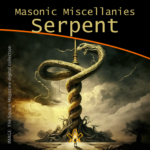 Masonic Miscellanies - The Symbol of the Serpent As a symbol, the serpent obtained a prominent place in all the ancient initiations and religions. |
 Masonic Miscellanies - The Four Veils in Royal Arch Masonry What are the four veils in Royal Arch Masonry? And what is the 'Ceremony of Passing the Veils'? Although common throughout Scotland, Ireland and the United States, it is mostly unknown in England, presently only worked in the Province of Bristol. ( and by dispensation ) |
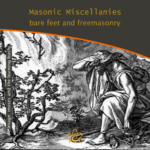 Masonic Miscellanies - Bare feet and Freemasonry A candidate for initiation into a Masonic Lodge often finds the requirements which he/she must fulfil somewhat odd. The mode of preparation often remains a puzzle, since the ritualistic explanation is not offered in full. Why are we 'slipshod' or "bare-footed" in Masonic Ritual? |
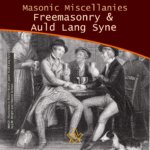 Masonic Miscellanies – Freemasonry and Auld Lang Syne Millions of people throughout the world will sing Auld Lang Syne to see out the Old Year. Few will know all the words, fewer still know what they mean, or that there is a link to Freemasonry. |
 Masonic Miscellanies - The Mosaic Pavement - why mosaic, why pavement? We are all familiar with the black and white chequered flooring of the Masonic lodge but where did it originate? There are a few theories… |
 Masonic Miscellanies – Masonic Master's Carpets Have you got a magic "Masonic Master's Carpet" in your lodge? I say 'magic' with my tongue firmly in my cheek because (as far as I know) these fabulous works of art don't bestow any mystical powers but can bestow some educational ones! However, considering their possible value today, they may magic up some interest (or funds). |
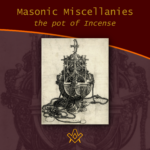 Masonic Miscellanies – The Pot of Incense Just when the pot of incense became an emblem of the third section of the Sublime Degree can not be stated with certainty. It is, apparently, an American invention or addition. But what does it symbolise? |
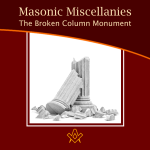 Masonic Miscellanies - The Broken Column Monument The story of the broken column was first illustrated by Amos Doolittle in the "True Masonic Chart" by Jeremy Cross, published in 1819. |
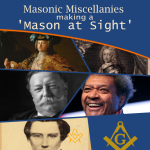 Masonic Miscellanies - Making a 'Mason at Sight' What does it mean to make a 'Mason at sight', and who was made one? |
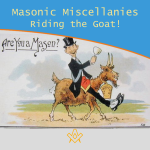 Masonic Miscellanies - Riding the Goat! Many Freemasons will have come across the phrase 'riding the goat', and will no doubt have been the butt of a joke about it (sorry, I couldn't resist!) But what does it mean and where did the phrase come from? |
 Masonic Miscellanies - What are the 'three dots'? Three dots or points in an upright triangular shape ∴ is most commonly known as the 'therefore' sign – so why is it used in Freemasonry? |
 Masonic Miscellanies - Keep Within Compass This month we discover a series of allegorical prints warning us to "Keep within Compass and you shall be sure, to avoid many troubles which others endure." |
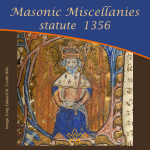 Masonic Miscellanies - statute 1356 Further to the reference in the article – The Builders - 6 - Free-Masons 'a statute was enacted against the Free-masons in 1356' – Regulations for masons who are hewers, on the one hand, and the light masons and setters on the other. |
 Masonic Miscellanies - An Anti-Masonic 'Apron'? The Anti-Masonic 'Apron' was created during the 1832 Presidential election in USA. It was not Ani-masonic. And it was not an apron. Read on to find out what and why it was created. |
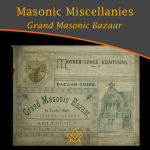 Masonic Miscellanies - Grand Masonic Bazaar (1895) Grand Masonic Bazaar (1895); to raise funds to clear the debt incurred by “Mother Kilwinning” in rebuilding their Lodge. |
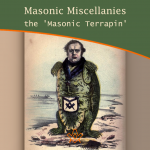 Masonic Miscellanies - the 'Masonic Terrapin' A satirical book from 1851 includes a bizarre caricature of a 'Masonic Terrapin' - all I can say is 'read on'… |
 Masonic Miscellanies - Masonic Bookplates You probably know what a bookplate is for, but did you know that the earliest known book mark/label dates from the reign of Amenhotep III in Egypt around 1391−1353 BCE?! |
 Masonic Miscellanies - Freemasonry & Bees Freemasonry & Bees - what's the buzz? The bee was among the Egyptians the symbol of an obedient people, because, says Horapollo, of all insects, the bee alone had a king. |
 Masonic Miscellanies - The mystery of the Tattooed Freemason In 1894, the body of a drowned man was found in the Bay of San Francisco - what they discovered was amazing. |
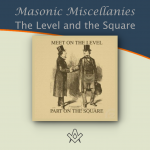 Masonic Miscellanies - The Level and the Square (A Poem) The Level and the Square (A Poem) - "We meet upon the Level, and we part upon the Square – |
 Masonic Miscellanies - The Mystic Tie What is the 'Mystic Tie'? Clue: it's not an item of neckwear! |
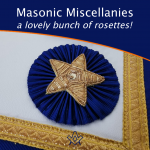 Masonic Miscellanies - A lovely bunch of rosettes! Where did the origin of the use of rosettes on Masonic aprons come from ? |
 Masonic Miscellanies - The Lodge of Sorrow The Lodge of Sorrow - Extracted General Ahiman Rezon, by Daniel Sickles, [1868] |
 Masonic Miscellanies - Memento Mori Memento Mori - a Masonic reminder to make your mark on the world |
 Masonic Miscellanies - A closer look at the Level and the Plumb-rule A closer look at the Level and the Plumb-rule |
 Masonic Miscellanies - The Symbolism of the Gloves The Symbolism of the Gloves and why Freemasons wear white gloves |
 Masonic Miscellanies - Will the real James Anderson please stand up? Will the real James Anderson please stand up? |
 Masonic Miscellanies - The Legend of the Third Degree The most important and significant of the legendary symbols of Freemasonry is, undoubtedly, that which relates to the fate of Hiram Abif. |
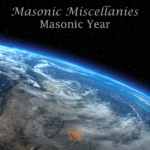 Masonic Miscellanies - Masonic Calendar Why do Freemasons use different 'years' to our regular calendar? |
 Masonic Miscellanies - What is a 'Lewis'? The English word 'Lewis' is a term belonging to operative Masonry, and signifies an iron cramp, which is inserted in a cavity prepared for the purpose in a large stone. |
 Masonic Miscellanies - From J.S.M. Ward Ever wondered why masons had to be 'free' or why we have a Tyler? |
Tubal Cain
Masonic Aprons NFT
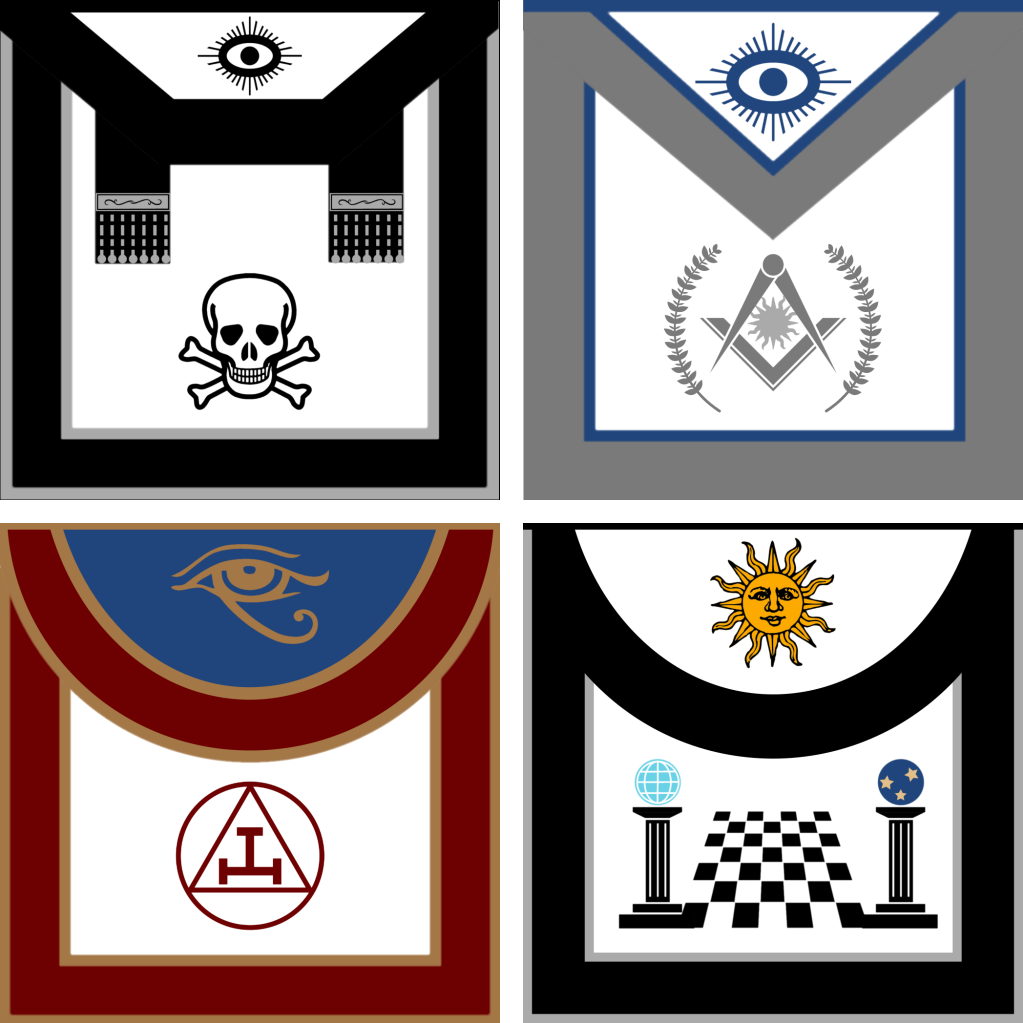



Each Tubal Cain Masonic Apron NFT JPEG includes a full size masonic apron and worldwide shipping
masonic knowledge
to be a better citizen of the world
share the square with two brothers

click image to open email app on mobile device
